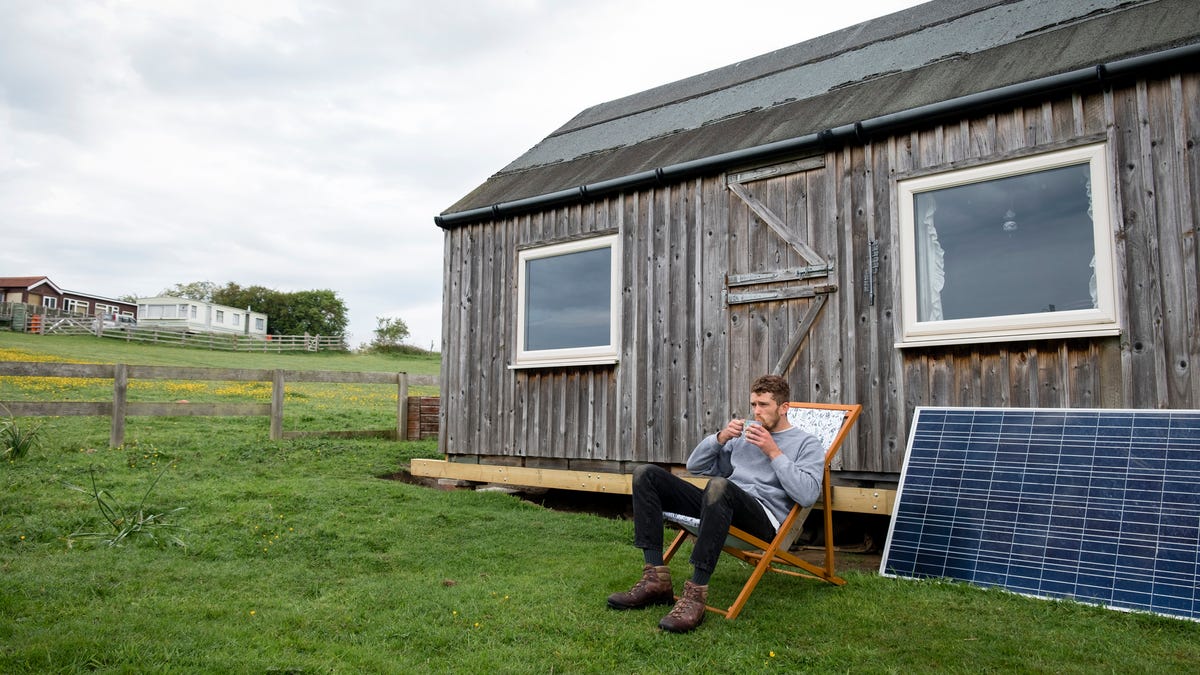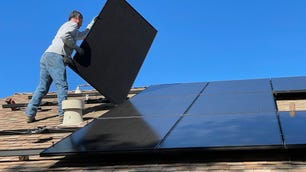
If you feel the cost of electricity has risen recently, you’re not imagining it. We are also using more electronic devices that consume more electricity, which contributes to your bills. As per the inflation data published by the US Bureau of Labor Statistics, the cost of electricity rose by 5.1% in the 12 months ending in April. That’s much below 2023, however, when it rose by nearly 12%.
With energy prices always climbing, you might be tempted to take your home off grid and cut ties with your utility completely. The proliferation of rooftop solar panels might make it seem in reach, but it’s not as simple as it sounds.
CNET contributor Eric Mack knows all too well what it takes to move completely off the gird and achieve 100% energy independence. “Living off the grid means committing to sourcing everything you need to survive and thrive independently: food, shelter, water, energy. It’s empowering, until the moment things don’t work,” Mack wrote in his first-person account about living off the grid.
Although this transition requires significant upfront costs, you could save money in the long run. Here’s what to know if you’re thinking about buying a solar panel system and disconnecting from the power grid.
What is an off-grid solar system?
An off-grid solar system is a self-contained energy system that independently produces and stores electricity.
Off-grid systems function by using solar panels, often mounted on the rooftop, to absorb energy radiated from the sun and convert it to direct current electricity before transferring it to a battery for storage. An inverter converts the energy stored in the battery to alternating current electricity to power your home.
There are four main components of every off-grid solar system:
- The solar panels and mounts that hold the panels in place.
- The charge controller, which regulates energy flow from the solar panels to the batteries.
- The battery, which stores the energy accumulated from the solar panels.
- The inverter, which converts the DC electricity stored in the battery to AC electricity that runs appliances.
As inflation continues to erode the dollar’s value, more people have embraced cost-effective sustainability practices. These off-grid solar system solutions offer the dual benefit of positively affecting the environment and increasing energy independence.
Can you still be connected to the grid and have solar panels?
Grid-tied systems are not independent, standalone entities. Instead, they are connected to the utility grid and transmit excess energy generated by the solar panels back to the electric grid — often selling it back, through a process called net metering, for credits on your power bill. The primary advantage of grid-tied systems is they are significantly cheaper because the owners do not need to buy expensive batteries to add to the system.
Off-grid vs. grid-tied solar systems: Which is better?
When it comes to off-grid vs. grid-tied solar systems, there is no easy answer, said Rohit Kalyanpur, CEO of Optivolt, a Silicon Valley-based solar technology company. It all depends on your preferences and needs.
For example, If you live in a remote area and don’t have reliable access to the electricity grid, then an off-grid solar system would work better, said Kalyanpur.
Both grid-tied and off-grid solar systems are eligible for a 30% federal tax credit on the total cost of the system. In order for batteries to qualify for the credit, they’ll have to have a capacity of at least 3 kilowatt-hours.
Off-grid solar systems
undefined
| Benefit | You can achieve energy independence and self-sufficiency |
|---|---|
| Drawback | Has a higher upfront cost because it requires batteries and other additional equipment. |
| Good for | If you live in a remote area that is not connected to the electric grid. |
| Bad for | If you use equipment that consumes a lot of electricity or cannot afford the high upfront costs. |
Grid-tied solar systems
undefined
| Benefit | You can reduce your electric bill and receive compensation for any excess electricity fed into the utility grid. |
|---|---|
| Drawback | It relies on the utility grid as a backup system. When there are power outages, people without a battery backup still lose power. |
| Good for | If you have a connection to the grid and want to reduce your electricity bill. |
| Bad for | If you live in a remote area or area prone to frequent power outages. It’s also not ideal for those who want to achieve energy independence. |
Types of off-grid solar systems
Each off-grid solar system installed at a location must be customized to meet the unique energy needs of the people at that location, Kalyanpur said. However, three main types of off-grid solar systems cater to the energy needs of most people.
Solar-only systems
These systems rely exclusively on solar panels for power generation. The excess energy generated from the solar panels is stored in batteries and used when the panels don’t generate enough power to run the home — such as at night or when it’s cloudy. The cost of these systems depends on factors such as the number of solar panels, battery capacity and efficiency, and the types of inverters and charge controllers.
Solar system with generator backup
These systems combine solar panels with a backup generator. The solar system generates electricity during the day, and the portable home generator kicks in during periods of low sunlight or at night. These backup generators are usually powered by diesel, gasoline or natural gas. The cost of backup generators varies, so it’s essential to research and understand the costs associated with fueling the generator on a monthly basis before making a decision.
Hybrid solar systems
These systems use solar panels and other alternative renewable energy sources like wind turbines or hydroelectric power to create a diversified and reliable power system. Like solar-only systems, hybrid systems work in conjunction with external batteries.
How much do off-grid solar systems cost?
Off-grid solar energy systems are a great alternative that helps families meet their energy needs and save money on their utility bills. But solar panels aren’t cheap, and neither is the installation work required to get a system in operation. The typical solar panel system in the US costs around $30,000 before the federal tax credit.
Off-grid systems will typically be even more costly. For example, high-capacity, high-efficiency solar batteries are typically very expensive and cost another $10,000 to $20,000. In some cases, they may be more expensive than solar panels.
Correction, Aug. 18: This story originally presented some statements as direct quotations that were actually paraphrases of what the individual cited had said. Those passages have now been rendered appropriately as paraphrases.

